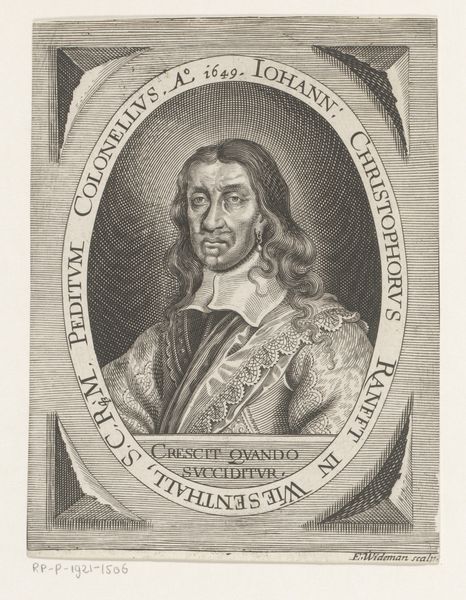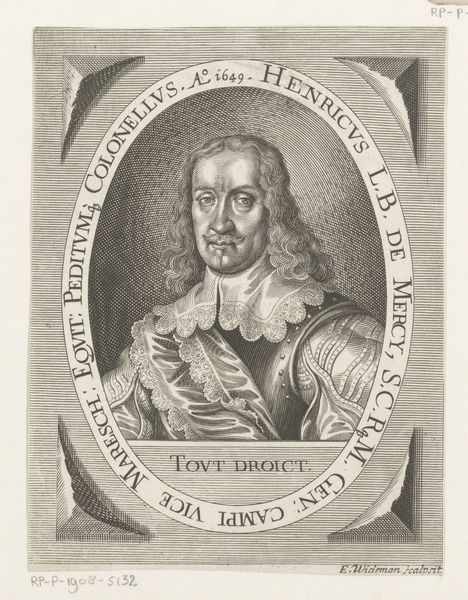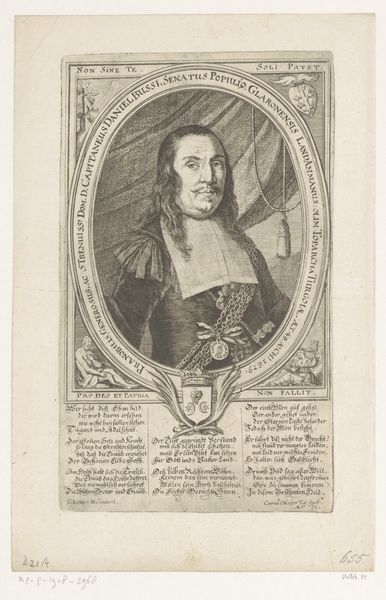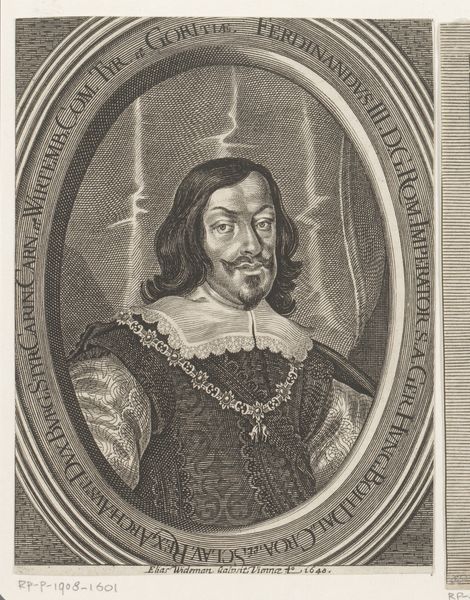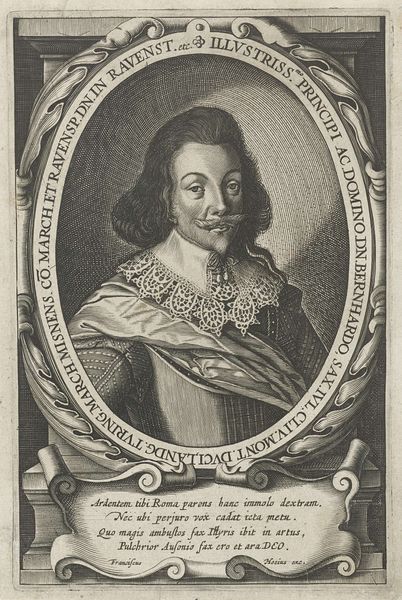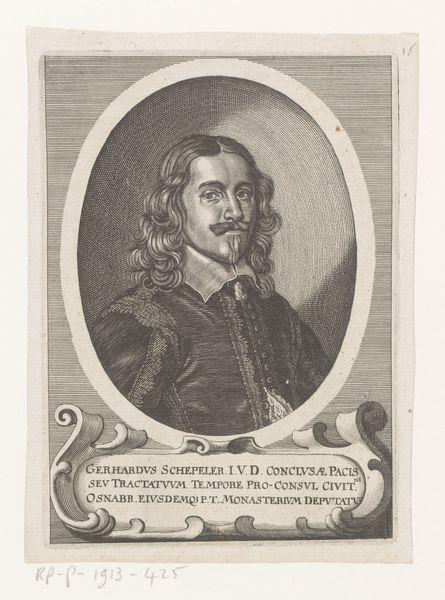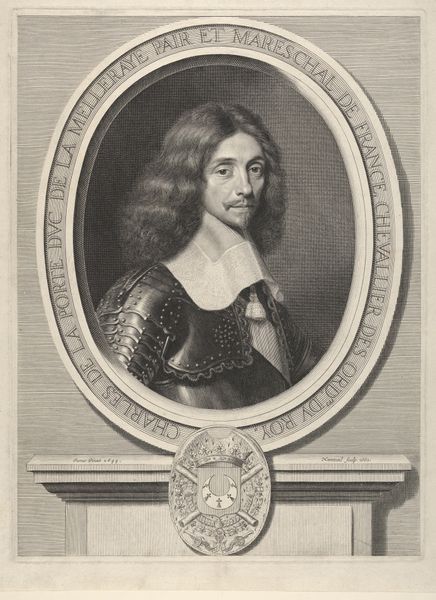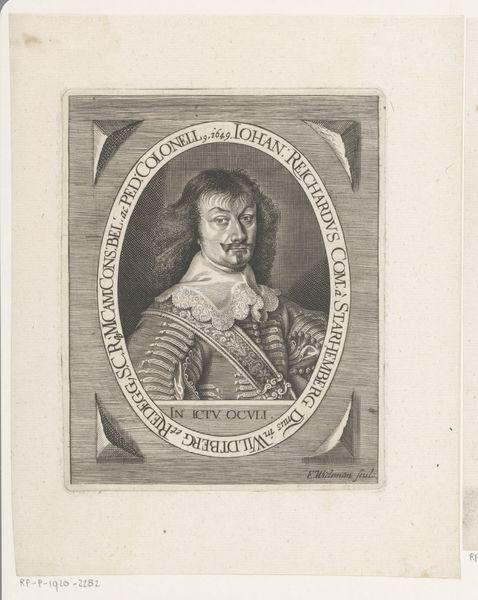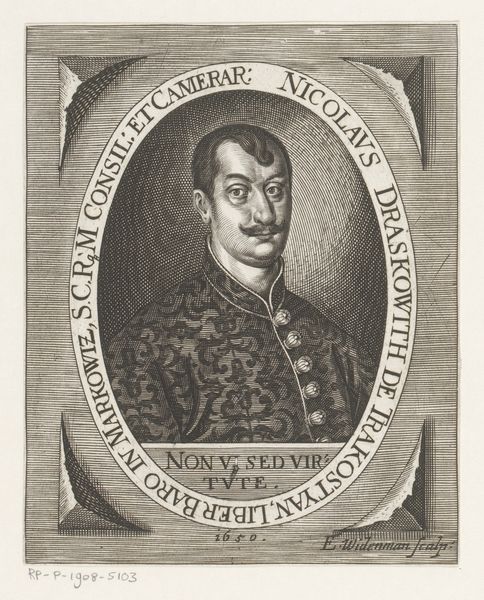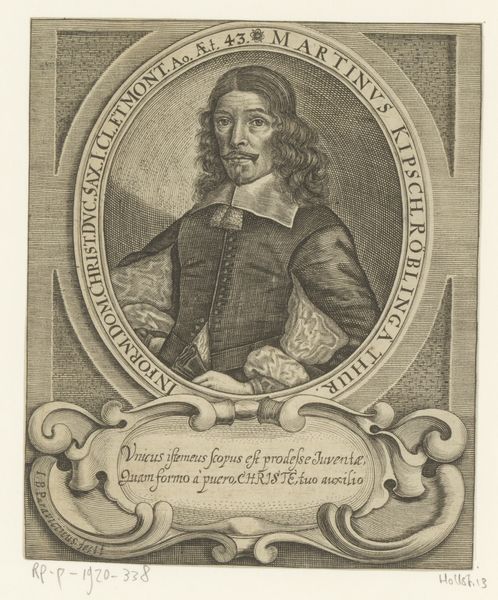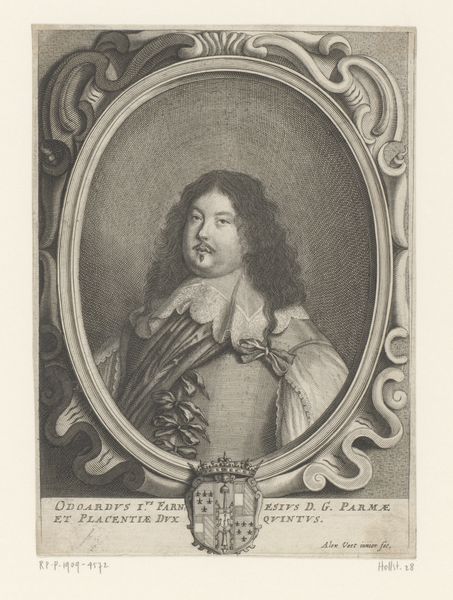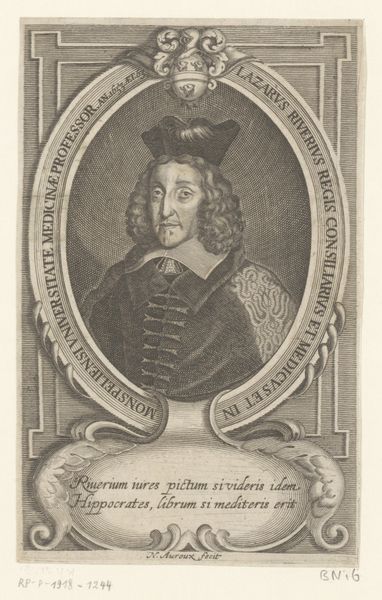
engraving
#
portrait
#
baroque
#
old engraving style
#
portrait drawing
#
history-painting
#
engraving
Dimensions: height 141 mm, width 107 mm
Copyright: Rijks Museum: Open Domain
Editor: So, this is Elias Widemann's "Portret van Theodor Ghiesler," an engraving from 1647. There's an intensity to his gaze, almost challenging. How do you interpret this work? Curator: It's fascinating how Widemann positions Ghiesler within the visual language of power and status of the Baroque period. Look at the framing, the Latin inscription. How do you think these elements contributed to the construction of Ghiesler’s identity in the 17th century? Editor: Well, the inscription certainly adds to the formal presentation. Was it common to include text within portraiture during this period? Curator: Indeed. These were carefully constructed performances of identity, weren’t they? The clothing, the pose, even the gaze. They all worked to solidify a certain social position, and legitimized existing power structures. What social classes or groups were typically excluded from this sort of representation? Editor: Presumably, the lower classes and perhaps women? Curator: Exactly. By understanding who is absent, we gain a sharper insight into who *is* present, and why. It prompts us to question what narratives and identities remain unacknowledged within the grand narratives of history. What do you think? Editor: It makes me think about how even seemingly simple portraits are so much more complex when viewed through the lens of history and social power. Curator: Precisely. It invites a continual interrogation of art’s role in perpetuating – or even challenging – these power structures.
Comments
No comments
Be the first to comment and join the conversation on the ultimate creative platform.
